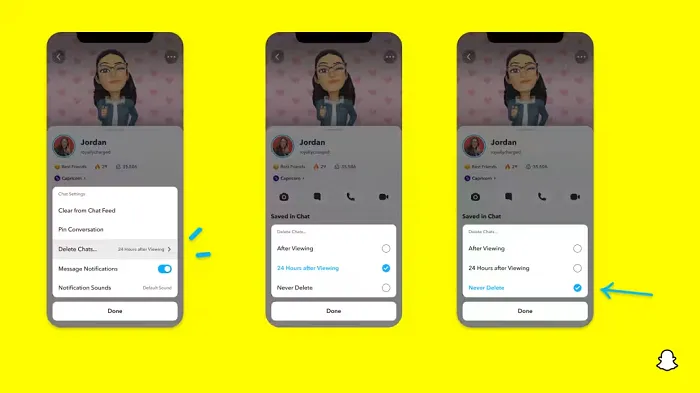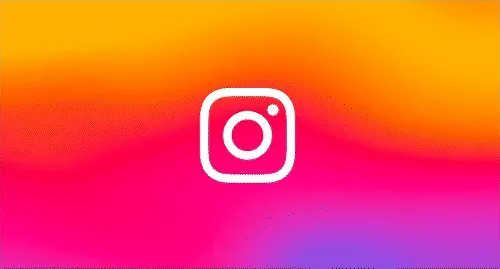SOCIAL
Twitter Announces the Re-Launch of its Paid Verification Plan, with a Price Increase on iOS

It’s back.
After Twitter suspended its $8 verification plan early last month, just days after its initial launch, it’s now planning to restart the program once again, though with one significant tweak.
That’s right, users that sign up on an iOS device will have to pay $11 per month – or $132 per year – to get their own blue checkmark, or alternatively, you can pay $8 per month if you sign up on the web.
Why?
Because Twitter, evidently, has worked out that Apple’s 30% in-app payment tax will cut into the potential profits from the program too much, so rather than trying to work out an alternative system, or maybe give people even more for their dollar, Twitter’s instead looking to pass on the tax directly to users.
So if you sign up on iOS, you’ll be paying a 37% mark-up, for absolutely nothing extra.
Why would anyone do that? I don’t know, why would anyone sign-up to get a blue checkmark at all? But some people will – while as Twitter notes you’ll also, maybe, get access to these add-on benefits sometime in future:
- Tweets from verified users will be in replies mentions and search – The plan here is that in order to incentivize take-up of the option, Twitter will list tweets from paying subscribers higher, effectively limiting the exposure of tweets from those who can’t/won’t pay. Which, incidentally, is what Elon and his conservative pals are currently fuming over Twitter doing to others in the past, and as we’ve noted previously, given that the vast majority of people don’t tweet, not sure how much of a lure this is.
- Twitter Blue subscribers will see half the ads – Maybe. Elon promised this as a feature of his new Blue plan at the beginning, but various commentators and internal advisors have since noted that this might not be workable due to the impact it would have on Twitter’s ad revenue, versus the income they might get from subscriptions. Essentially, this will only be offered if enough people sign-up for Twitter Blue. As such, I wouldn’t hold your breath.
- Blue subscribers will be able to post longer videos – Elon has also repeatedly flagged his plans to add more YouTube-like video posting options, which would mean that people no longer have to post YouTube clips, as they could host the videos on Twitter itself. Again, this might be a take-up based element, as the added cost of hosting longer videos, if people do start doing so, will stack up pretty quick.
Other than that, you get access to Tweet editing, 1080p video uploads, reader mode, and a blue checkmark – through importantly, this will now come after your account has been reviewed.
In this revamped $8 verification process, Twitter will specifically be looking to stamp out the impersonation issues that marred the initial launch, with a new set of parameters designed to ensure that people can’t just buy a blue tick, change their name to a brand, and dupe people by masquerading as the official business account.
Under the new system:
- Twitter will verify the phone number and profile name of each account before assigning a blue checkmark
- If you change your Twitter handle, display name or profile photo after you’ve been given a blue checkmark, you’ll temporarily lose the blue tick until your account is reviewed by Twitter
- Twitter is also adding gold checkmarks for official brand accounts, and gray ticks for ‘government and multilateral’ accounts, as we recently reported (which will also mean that the odd-looking ‘official’ checkmarks will be removed again next week)
- Twitter’s also working on a system that would enable brands to assign a branded indicator to employee accounts, as another means of official verification, on top of the blue tick (though this has not been mentioned in today’s re-launch announcement)
In combination, Twitter’s hoping that these additional measures will ensure that the system isn’t abused by pranksters and activists looking to dupe people, and in theory, it should work to limit abuse. The key challenge, then, will be the labor time required for manual review, and how Twitter plans to tackle this, especially if they’re going to have to manually check every time a blue checkmark account changes its profile image.
It seems like a lot of extra work, with a lot fewer moderation staff. But this is the plan that Twitter’s going with, in the hopes that the program will lure enough people to then make it a viable pathway to both combat bot profiles in the app, and generate significant revenue, and reduce its reliance on ad spend.
But it won’t.
You can take that as a criticism of Elon Musk and his ‘free speech’ idealism if you want, but the fact is that Twitter’s going to need tens of millions of people to sign up to this scheme, paying for little more than a graphic on their Twitter account, in order for it to achieve its stated goals.
As I’ve previously noted:
- If Twitter wants to get subscriptions to contribute 50% of its overall revenue, as Musk has stated, it’ll need more than 24.6 million users to sign on to pay $8 per month for a blue tick (even with the new iOS price point)
- If Twitter wants to use this as a means to ‘verify all the humans’, so that only bot accounts are the ones that don’t have a blue tick, you’d think it’ll need something in the vicinity of 75% of its total user base to sign-up for it to be effective – or around 178 million users paying $8/$11 each month
- A key problem – the majority of Twitter users are outside the US, where this monthly charge will be a lot more cost-prohibitive. This is especially true in India, where most of Twitter’s growth has come from over the past three years. India now has 18.8m users, making it Twitter’s third biggest audience market, and while Twitter has also flagged variable pricing by region, even $1 per month could be too high for developing markets
As you can see, there are some significant obstacles and benchmarks for the program. And while Elon himself seems optimistic, there’s just no way that Twitter’s going to see these levels of take-up, especially now that it’s had to increase the price on iOS, adding either more cost or more friction to the process.
For comparison, Twitter Blue peaked at 100k sign-ups, even with tweet editing as an add-on update, one of the most requested social media features of all time. That’s equivalent to 0.04% of Twitter’s userbase. Snapchat+, a comparable subscription offering, providing similar incentives, has been taken up by 0.41% of Snap users.
If Twitter gets two million users to sign-up to this updated Blue plan, that would be huge; if it gets 10 million, that would be massive. And yet, it would still be way, way short of the numbers required to reach its intended goals.
Maybe this is just the start, maybe Twitter can sweeten the deal over time, and get more people paying, and maybe, possibly, this could be a viable pathway towards Musk and Co.’s aims.
But right now, I just don’t see it.
We’ll find out, either way, over the coming months.
SOCIAL
Snapchat Explores New Messaging Retention Feature: A Game-Changer or Risky Move?

In a recent announcement, Snapchat revealed a groundbreaking update that challenges its traditional design ethos. The platform is experimenting with an option that allows users to defy the 24-hour auto-delete rule, a feature synonymous with Snapchat’s ephemeral messaging model.
The proposed change aims to introduce a “Never delete” option in messaging retention settings, aligning Snapchat more closely with conventional messaging apps. While this move may blur Snapchat’s distinctive selling point, Snap appears convinced of its necessity.
According to Snap, the decision stems from user feedback and a commitment to innovation based on user needs. The company aims to provide greater flexibility and control over conversations, catering to the preferences of its community.
Currently undergoing trials in select markets, the new feature empowers users to adjust retention settings on a conversation-by-conversation basis. Flexibility remains paramount, with participants able to modify settings within chats and receive in-chat notifications to ensure transparency.
Snapchat underscores that the default auto-delete feature will persist, reinforcing its design philosophy centered on ephemerality. However, with the app gaining traction as a primary messaging platform, the option offers users a means to preserve longer chat histories.
The update marks a pivotal moment for Snapchat, renowned for its disappearing message premise, especially popular among younger demographics. Retaining this focus has been pivotal to Snapchat’s identity, but the shift suggests a broader strategy aimed at diversifying its user base.
This strategy may appeal particularly to older demographics, potentially extending Snapchat’s relevance as users age. By emulating features of conventional messaging platforms, Snapchat seeks to enhance its appeal and broaden its reach.
Yet, the introduction of message retention poses questions about Snapchat’s uniqueness. While addressing user demands, the risk of diluting Snapchat’s distinctiveness looms large.
As Snapchat ventures into uncharted territory, the outcome of this experiment remains uncertain. Will message retention propel Snapchat to new heights, or will it compromise the platform’s uniqueness?
Only time will tell.
SOCIAL
Catering to specific audience boosts your business, says accountant turned coach

While it is tempting to try to appeal to a broad audience, the founder of alcohol-free coaching service Just the Tonic, Sandra Parker, believes the best thing you can do for your business is focus on your niche. Here’s how she did just that.
When running a business, reaching out to as many clients as possible can be tempting. But it also risks making your marketing “too generic,” warns Sandra Parker, the founder of Just The Tonic Coaching.
“From the very start of my business, I knew exactly who I could help and who I couldn’t,” Parker told My Biggest Lessons.
Parker struggled with alcohol dependence as a young professional. Today, her business targets high-achieving individuals who face challenges similar to those she had early in her career.
“I understand their frustrations, I understand their fears, and I understand their coping mechanisms and the stories they’re telling themselves,” Parker said. “Because of that, I’m able to market very effectively, to speak in a language that they understand, and am able to reach them.”Â
“I believe that it’s really important that you know exactly who your customer or your client is, and you target them, and you resist the temptation to make your marketing too generic to try and reach everyone,” she explained.
“If you speak specifically to your target clients, you will reach them, and I believe that’s the way that you’re going to be more successful.
Watch the video for more of Sandra Parker’s biggest lessons.
SOCIAL
Instagram Tests Live-Stream Games to Enhance Engagement

Instagram’s testing out some new options to help spice up your live-streams in the app, with some live broadcasters now able to select a game that they can play with viewers in-stream.
As you can see in these example screens, posted by Ahmed Ghanem, some creators now have the option to play either “This or That”, a question and answer prompt that you can share with your viewers, or “Trivia”, to generate more engagement within your IG live-streams.
That could be a simple way to spark more conversation and interaction, which could then lead into further engagement opportunities from your live audience.
Meta’s been exploring more ways to make live-streaming a bigger consideration for IG creators, with a view to live-streams potentially catching on with more users.
That includes the gradual expansion of its “Stars” live-stream donation program, giving more creators in more regions a means to accept donations from live-stream viewers, while back in December, Instagram also added some new options to make it easier to go live using third-party tools via desktop PCs.
Live streaming has been a major shift in China, where shopping live-streams, in particular, have led to massive opportunities for streaming platforms. They haven’t caught on in the same way in Western regions, but as TikTok and YouTube look to push live-stream adoption, there is still a chance that they will become a much bigger element in future.
Which is why IG is also trying to stay in touch, and add more ways for its creators to engage via streams. Live-stream games is another element within this, which could make this a better community-building, and potentially sales-driving option.
We’ve asked Instagram for more information on this test, and we’ll update this post if/when we hear back.
-

 SEO7 days ago
SEO7 days agoGoogle Limits News Links In California Over Proposed ‘Link Tax’ Law
-

 SEARCHENGINES6 days ago
SEARCHENGINES6 days agoGoogle Core Update Volatility, Helpful Content Update Gone, Dangerous Google Search Results & Google Ads Confusion
-

 SEO6 days ago
SEO6 days ago10 Paid Search & PPC Planning Best Practices
-

 MARKETING7 days ago
MARKETING7 days ago2 Ways to Take Back the Power in Your Business: Part 2
-

 MARKETING5 days ago
MARKETING5 days ago5 Psychological Tactics to Write Better Emails
-

 SEARCHENGINES5 days ago
SEARCHENGINES5 days agoWeekend Google Core Ranking Volatility
-

 PPC7 days ago
PPC7 days agoCritical Display Error in Brand Safety Metrics On Twitter/X Corrected
-

 MARKETING6 days ago
MARKETING6 days agoThe power of program management in martech












You must be logged in to post a comment Login